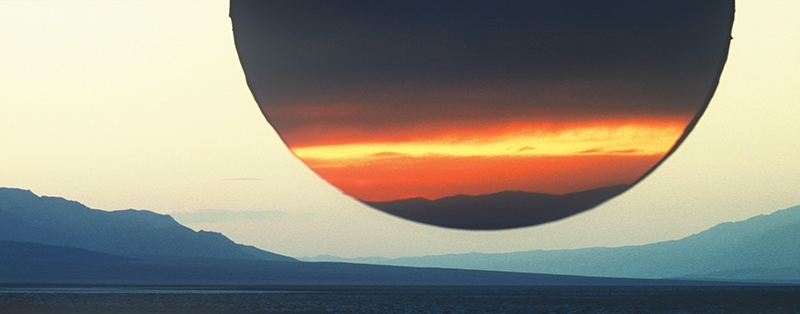
Gallery Stroll: The Great, Great Salt Lake
Art
Utah has some truly unique landscapes that have been inspiring artists for hundreds of years. A trip to the West Desert or Southern Utah might seem like a common weekend getaway to you or me, but for many visitors to our state, this magical, allusive, raw terrain can be life-changing.For February’s Gallery Stroll, I recommend rekindling the romance with our own backyard by visiting three profound exhibits that act as love notes to the Great Salt Lake, all at the Utah Museum of Fine Art on the University of Utah campus.
The Great Salt Lake covers an average of 1,700 square miles, and though people often refer to it as America’s Dead Sea, the lake is alive with birds, fish, brine shrimp and a mystic allure that keeps tourists and artists coming back for more. British-born artist Alfred Lambourne crossed the plains on foot using the Morman handcart trail when he was only 16 years old. A self-taught artist, he fell in love with the rugged landscape while sketching his adventure. Though he painted many majestic landscapes in breathtaking locations over his career, he found his muse in the Great Salt Lake. His paintings, poems and sketches weave a story of a man obsessed and inspired by what he called “Our Inland Sea.” The exhibit features works depicting the mystique of the black rock, the unyielding weather and the solitude that Lambourne found so inspiring. The Savage Poem Around Me: Alfred Lambourne’s Great Salt Lake is on view now through June 15, 2014.
Like Lambourne, and coincidentally a fellow Brit, acclaimed artist and Sundance-alum Tacita Dean found herself mesmerized by the lake after she first visited Spiral Jetty in 1997 during a June screenwriters lab. She began a series of conversations about the meaning of Robert Smithson’s work with friend and famed author J.G. Ballard (best known for his novels Empire of the Sun and Crash, both later adapted into films). Before Ballard died in 2009, he challenged her to investigate the nature, materials and mystery that is Spiral Jetty. Guided by Ballard’s science fiction short story, The Voices of Time (1960), she used 35mm film, Utah’s desert landscapes and her own patented technique of “aperture gate masking.” Representatives from UMFA say Dean has created a film that’s a “treatment of time and place [that] parallels the effects of Ballard’s fiction and Smithson’s artwork.” The film, JG, runs about a half hour and shows daily at 10:15 a.m., with subsequent screenings on the hour with the final showing at 4 p.m. (7 p.m. on Wednesdays).
From the poetic- and passion-driven to the exact and measureable, our final exhibit, The Great Salt Lake Landscan, joined the museum’s permanent collection Jan. 24. Commissioned by UMFA and produced by the Wendover/Los Angeles–based Center for Land Use Interpretation (CLUI), the Landscan video offers high-definition, vivid aerial views of the salt ponds, rail-lines, causeways and factories that make up the landscape of the Great Salt Lake. A project that would most often be shown in a history museum, I wondered why a fine art museum would commission such a piece. Whitney Tassie, UMFA Curator of modern and contemporary art, explained that “CLUI is interested in understanding the nature and extent of human interaction with the Earth’s surface so that we can better understand who we are, and what we are doing,” she says. “Particularly, the UMFA is committed to investigating our local landscape and how that has inspired artists thoughout time … CLUI’s contemporary investigation of our landscape via The Great Salt Lake Landscan continues that storyline.” The result of this joint project is a beautiful, compelling and cohesive story of the Great Salt Lake—our namesake, natural resource and artistic inspiration. Like our local art scene, the more we know and the more we go, the more we couldn’t imagine life without it. Go out and stroll!




